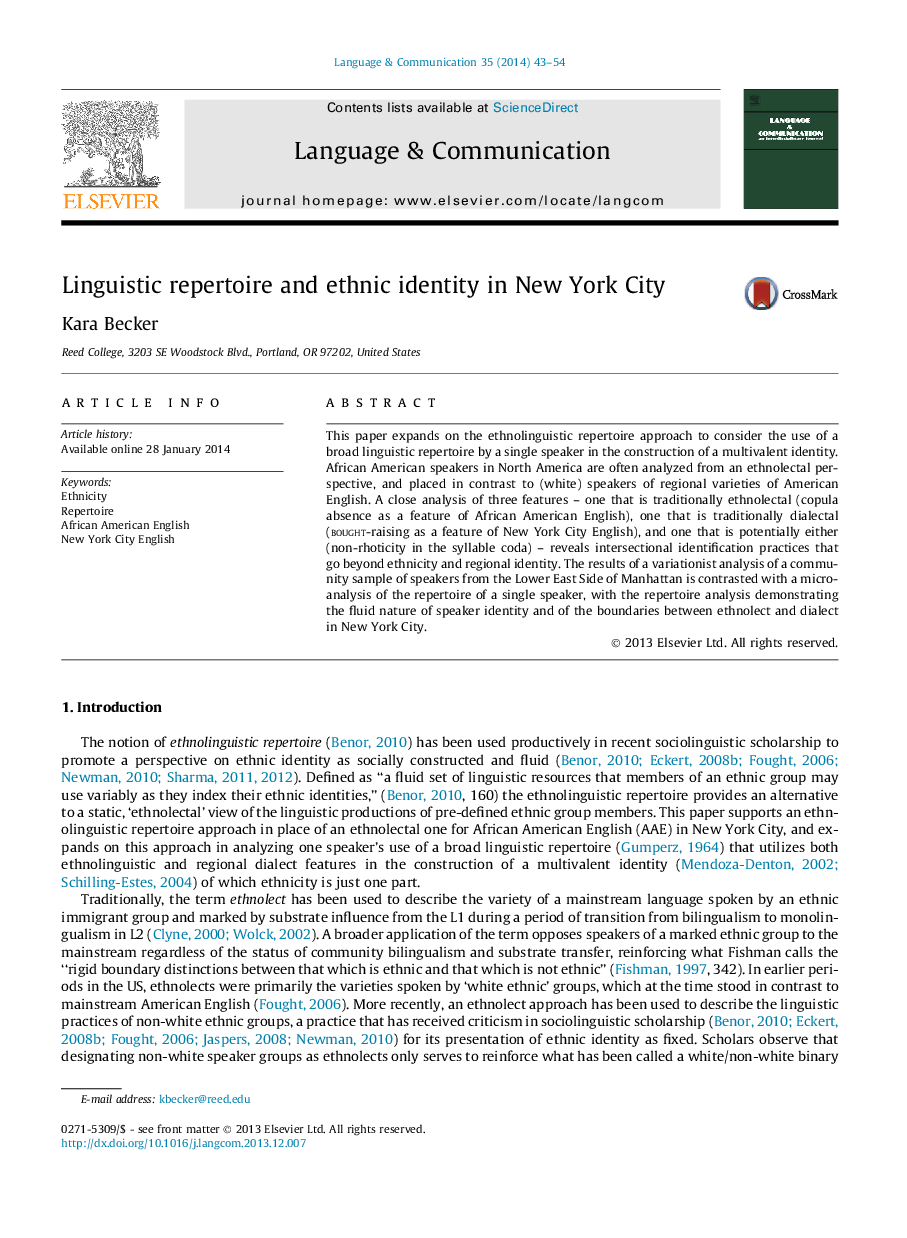| Article ID | Journal | Published Year | Pages | File Type |
|---|---|---|---|---|
| 934885 | Language & Communication | 2014 | 12 Pages |
•A linguistic repertoire approach provides a fluid perspective of ethnic identity.•Analysis of one African American speaker shows the limits of an ethnolectal approach.•Analysis of one speaker contrasts with a variationist analysis of a community sample.•Intersectional identification practices cross the boundaries of ethnolect and dialect.
This paper expands on the ethnolinguistic repertoire approach to consider the use of a broad linguistic repertoire by a single speaker in the construction of a multivalent identity. African American speakers in North America are often analyzed from an ethnolectal perspective, and placed in contrast to (white) speakers of regional varieties of American English. A close analysis of three features – one that is traditionally ethnolectal (copula absence as a feature of African American English), one that is traditionally dialectal (bought-raising as a feature of New York City English), and one that is potentially either (non-rhoticity in the syllable coda) – reveals intersectional identification practices that go beyond ethnicity and regional identity. The results of a variationist analysis of a community sample of speakers from the Lower East Side of Manhattan is contrasted with a micro-analysis of the repertoire of a single speaker, with the repertoire analysis demonstrating the fluid nature of speaker identity and of the boundaries between ethnolect and dialect in New York City.
